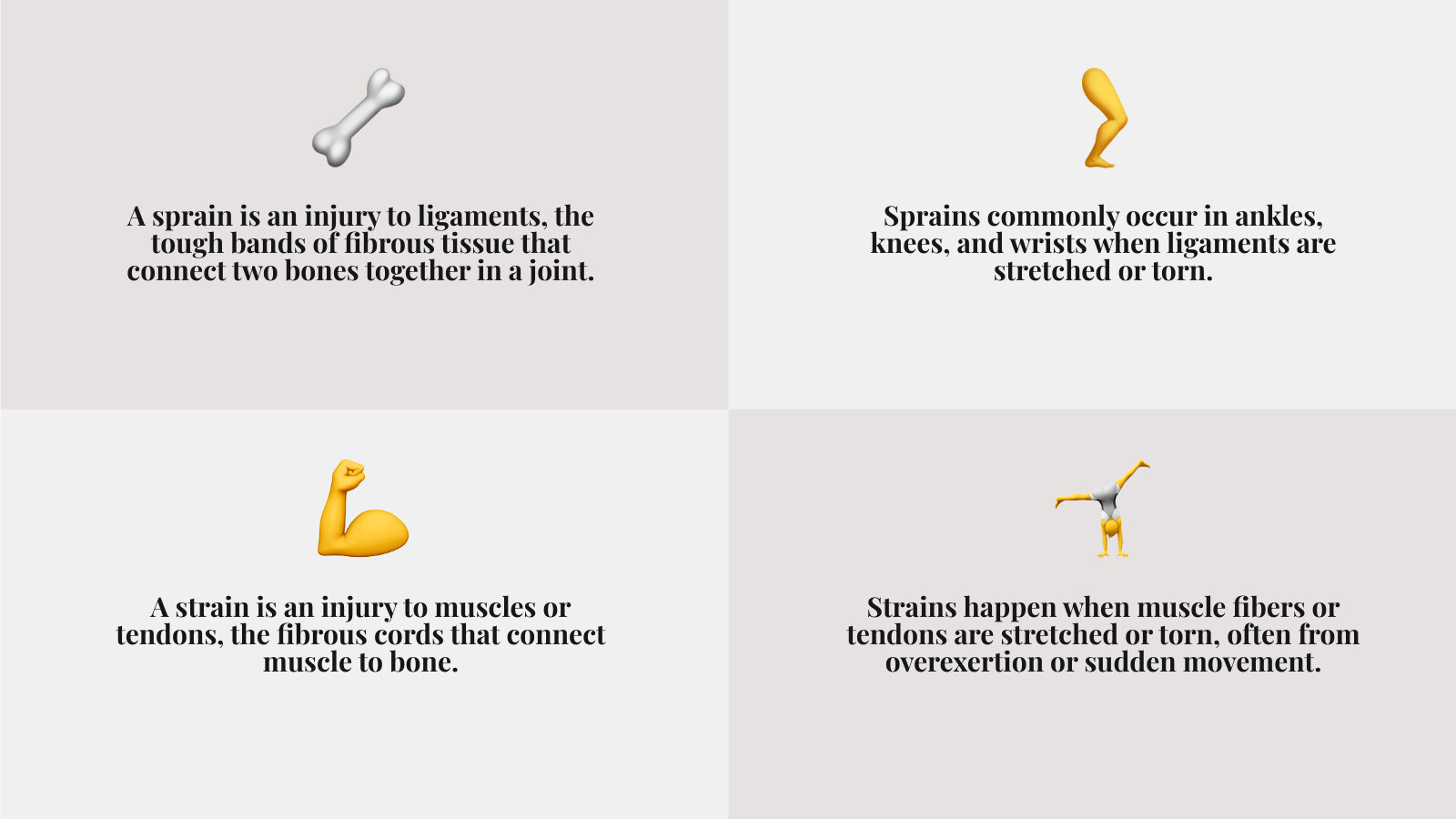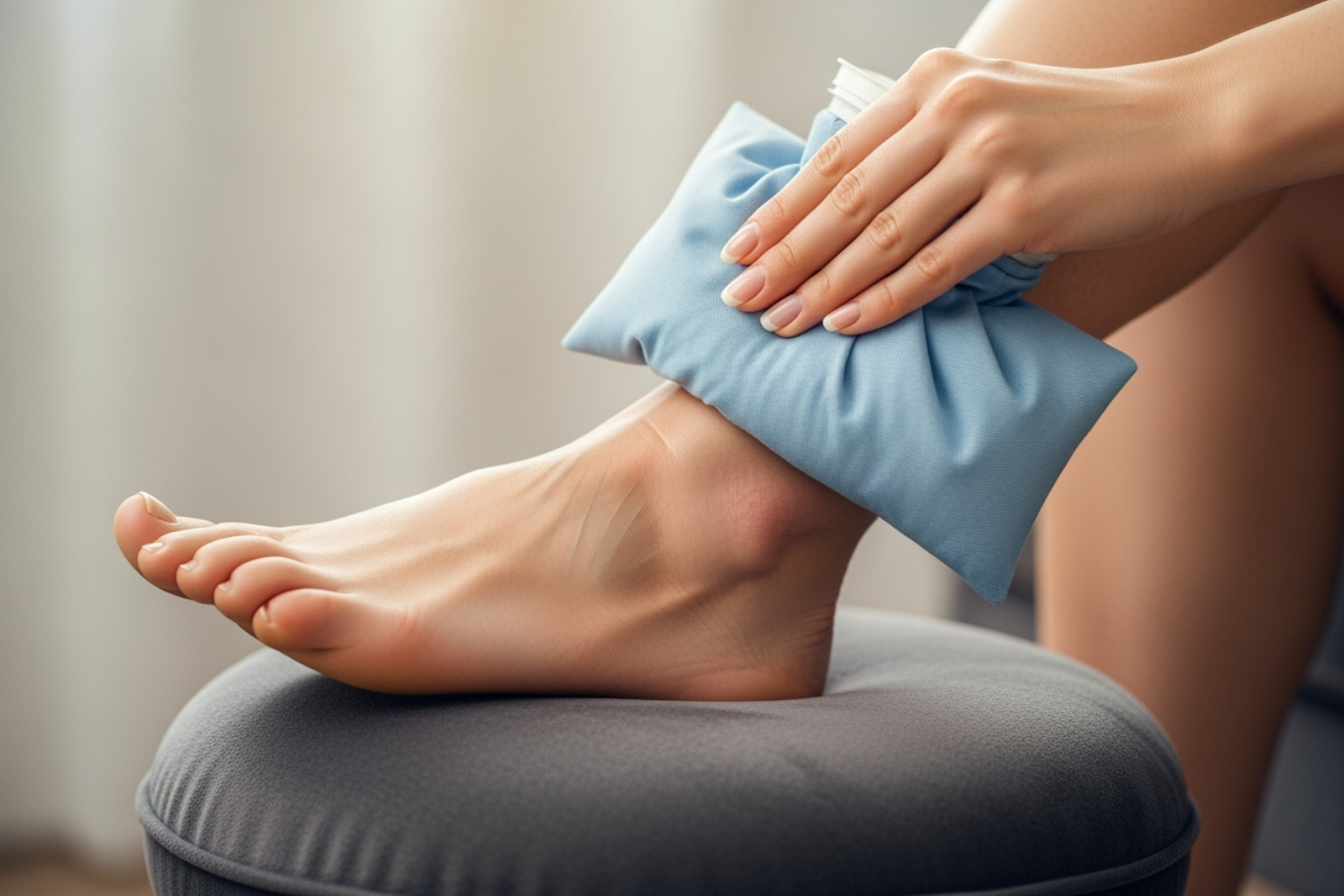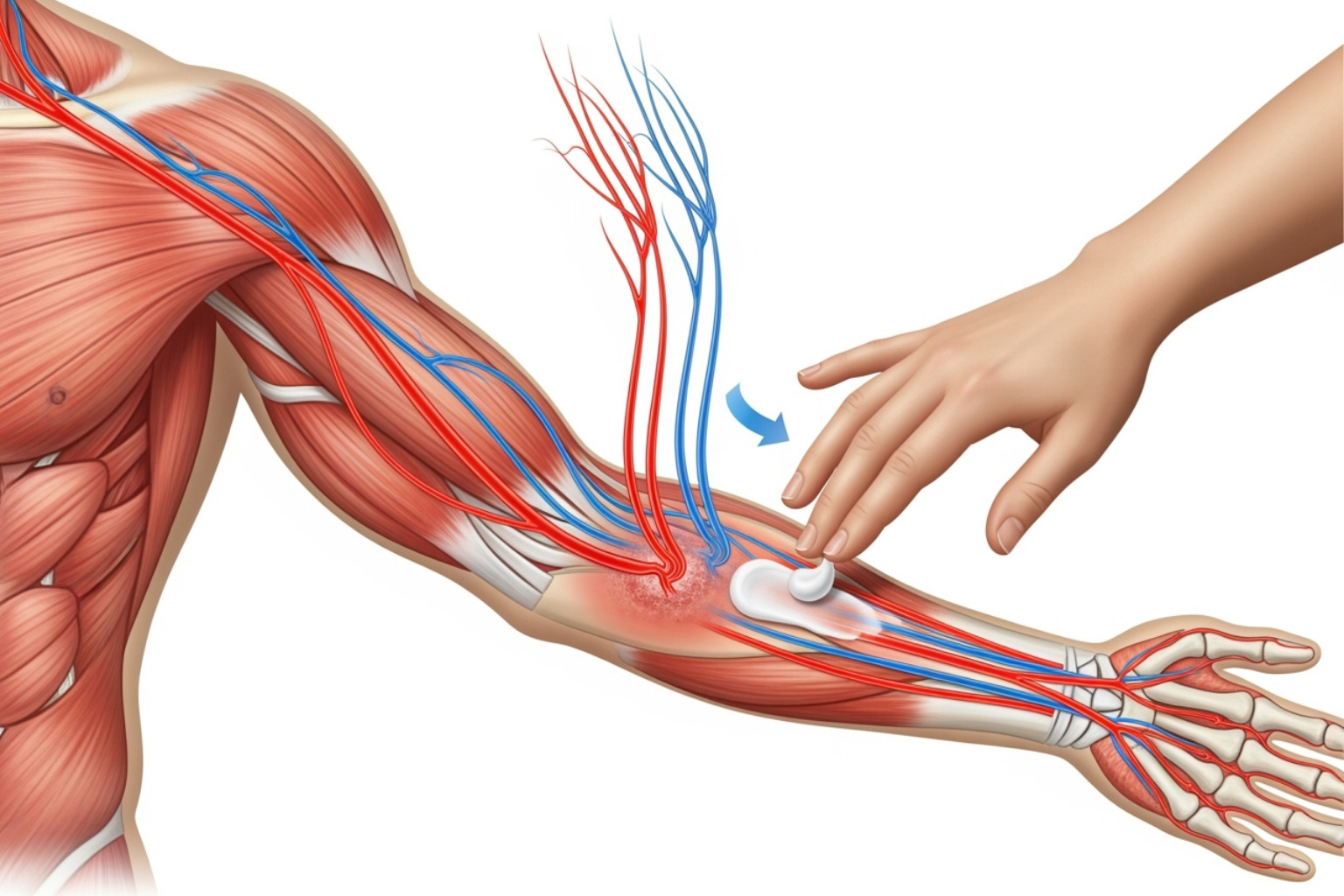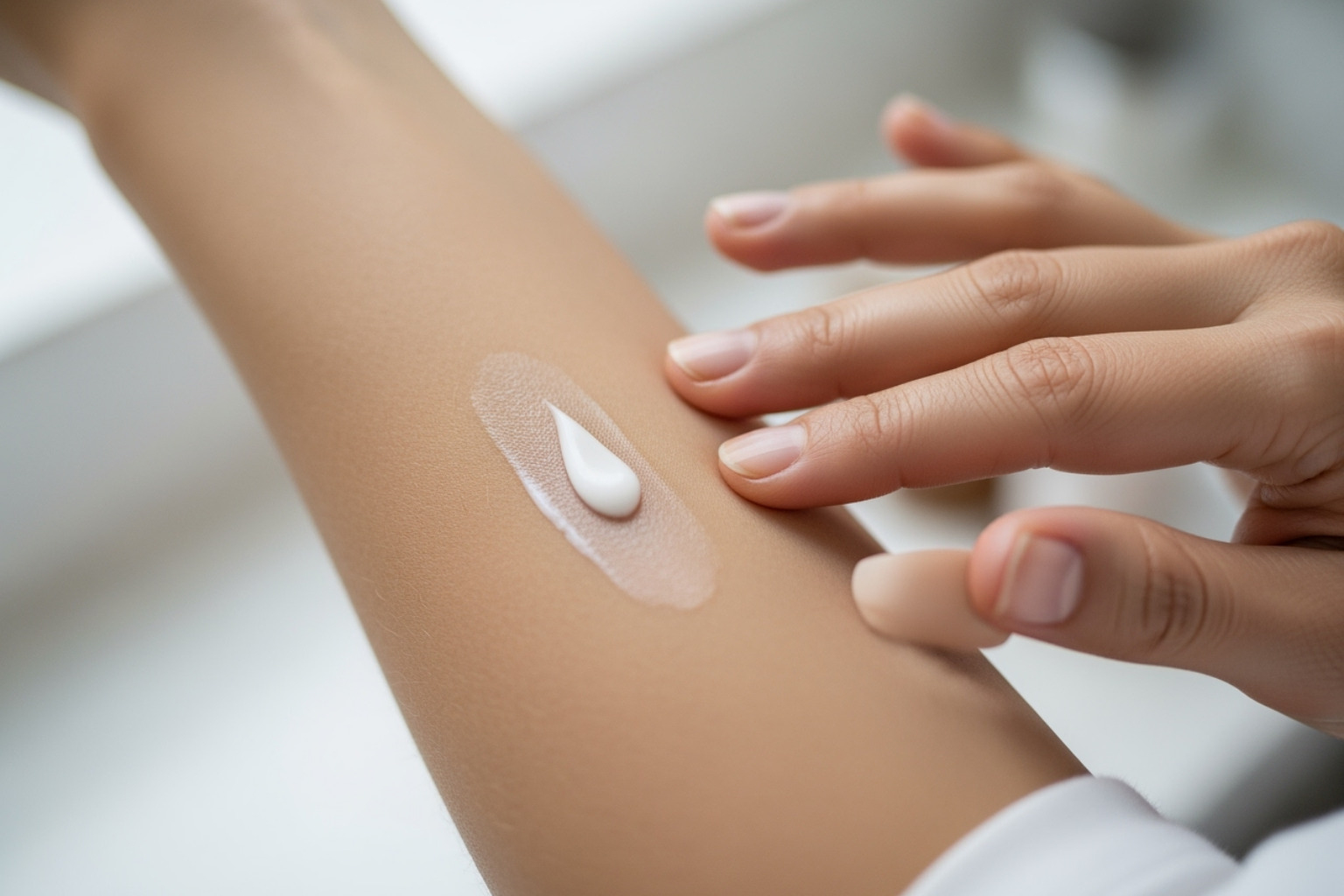Why Muscle Sprain Cream Matters for Fast Recovery
Muscle sprain cream provides targeted, topical relief for the pain and discomfort from overstretched or torn ligaments. When you twist an ankle or strain a shoulder, the right cream helps you manage symptoms while your body heals.
Quick Answer: What You Need to Know
- What they do: Block pain signals and create cooling or warming sensations to distract from discomfort.
- Key ingredients: Menthol, camphor, arnica, and aloe vera.
- How to use: Apply a thin layer to clean, dry skin 3-4 times daily. Avoid broken skin and patch test first.
- Best for: Minor sprains, strains, sports injuries, and post-workout soreness.
- Not a cure: Creams offer temporary relief while the R.I.C.E. method (Rest, Ice, Compression, Elevation) supports healing.
- When to see a doctor: If pain is severe, you heard a "pop," can't bear weight, or symptoms persist after 7 days.
A sprain affects ligaments (connecting bones), while a strain affects muscles or tendons. Most topical creams work for both, but understanding your injury helps.
Topical analgesics interfere with pain signals sent to the brain. They don't heal the injury but make recovery more comfortable, especially when used with other methods. The best formulas combine counterirritants like menthol (cooling) with soothing botanicals like arnica and aloe vera. This dual approach distracts your nervous system from pain while providing skin-level comfort. Natural, non-greasy options absorb quickly without leaving residue.
I'm Tony Enrico, and I've helped countless active individuals find natural pain relief with advanced formulas like Neuropasil. Our muscle sprain cream combines menthol, aloe, and urea to deliver fast, effective relief without harsh chemicals or a greasy feel.

Understanding Muscle Sprains: Causes, Symptoms, and Initial Care
A muscle sprain occurs when ligaments—the tough bands connecting bones at your joints—are stretched or torn. This is different from a strain, which affects muscles or tendons. Sprains often result from forcing a joint into an awkward position, causing the ligaments to overstretch or snap.
Common causes include:
- Sports injuries: Sudden pivots, jumps, or lunges in sports can stress ankles, knees, and wrists.
- Sudden twists: Stepping on uneven ground or missing a step can force a joint out of its normal position.
- Overstretching: Pushing ligaments past their limits during exercise, especially without a proper warm-up.
The telltale signs of a sprain appear quickly:
- Pain: Sharp and localized, worsening with movement.
- Swelling: Inflammation as the body responds to the injury.
- Bruising: Develops as small blood vessels break under the skin.
- Limited mobility: Difficulty moving the joint or bearing weight on it.
When an injury occurs, your immediate response is crucial. The R.I.C.E. protocol, recommended by health authorities like the Mayo Clinic, is the standard for initial care:
- Rest: Avoid activities that stress the joint to allow healing to begin.
- Ice: Apply cold packs for 15-20 minutes every few hours for the first 48 hours to reduce swelling and pain.
- Compression: Use an elastic bandage to control swelling without cutting off circulation.
- Elevation: Prop the injured area above heart level to help reduce fluid buildup.
While R.I.C.E. addresses the immediate crisis, a quality muscle sprain cream can help manage discomfort during the critical first days of recovery. For more information on managing muscle discomfort, see our guide on Muscle Pain.

The Science Behind Topical Creams: How Neuropasil Works
How can rubbing a cream on your skin ease deep ligament pain? The science is straightforward. When you have a sprain, pain receptors send signals through your nerves to your brain. Muscle sprain creams like Neuropasil work by interfering with these pathways, disrupting the pain signals before they register.
It's important to know that these creams do not cure the injury. They provide temporary relief by changing how your nervous system perceives pain, allowing you to rest more comfortably while your body heals. This is because, as explained by health experts, topicals interfere with the neural pathways responsible for transmitting pain signals.
This temporary relief is valuable. Less pain means better rest and more comfortable movement, helping your body focus on healing. Neuropasil's formula combines natural counterirritants and soothing botanicals for a comprehensive approach.

Neuropasil's Natural Counterirritants: The Hot & Cold Approach
Counterirritants create a new sensation, like cooling or warming, that distracts your brain from the underlying pain. Your nervous system's attention is redirected to the more immediate feeling.
- Menthol: A cornerstone of Neuropasil's formula, menthol triggers cold-sensitive receptors to create a powerful cooling sensation. This effect genuinely blocks pain signals at the nerve level, providing fast relief.
- Camphor: This ingredient creates a warming sensation that many find comforting for sore joints. Like menthol, it doesn't change your skin temperature but stimulates nerve endings to override pain signals.
This approach is key to effective Gel Muscle Pain Relief. Another warming ingredient, capsaicin, works similarly by interacting with pain receptors, as explained by Cleveland Clinic's research.
Soothing Botanicals and Herbal Formulations
While counterirritants provide immediate relief, Neuropasil also includes botanicals to nurture your skin and tissues.
- Arnica: Used for centuries to address bruising and inflammation, arnica is a gentle ally for the tenderness that accompanies sprains. Health resources, such as those from Memorial Sloan Kettering Cancer Center, note its traditional use for pain and swelling.
- Aloe Vera: Known for its soothing and moisturizing properties, aloe helps reduce skin irritation and keeps the area comfortable, even with repeated applications.
- Urea: A key ingredient in Neuropasil, this humectant draws moisture into the skin, helping other active ingredients penetrate more effectively for faster, targeted relief.
- Turmeric: This botanical, as noted by the National Center for Complementary and Integrative Health (NCCIH), contains curcumin, which is studied for its potential to support the body's natural response to inflammation, a key part of sprain recovery.
By combining these ingredients, Neuropasil offers comprehensive relief that cares for your body while you heal, aligning with our philosophy of Nerve Pain Relief with Neuropasil Natural Solutions.
How to Choose and Use the Best Muscle Sprain Cream for You
Choosing the right muscle sprain cream can feel overwhelming, but it comes down to understanding your needs and how different formulas work.

Selecting the Right Muscle Sprain Cream
Consider these factors when choosing a cream:
- Type of Pain: While most creams work for both strains and sprains, some ingredients target specific issues. For example, NSAID-based creams focus on inflammation, while others provide surface-level numbing.
- Sensation Preference: Do you prefer cooling or warming relief? Menthol-heavy formulas like Neuropasil deliver a refreshing coolness. Others prefer the relaxing sensation of warmth provided by ingredients like capsaicin. It's about what feels most soothing to you.
- Skin Sensitivity: If you have sensitive skin or allergies, always check the ingredients list. Look for natural formulas to avoid potential irritation from preservatives or synthetic fragrances.
- Athlete Needs: Active individuals often prefer fast-absorbing, non-greasy formulas that won't stain clothing. Neuropasil is designed to sink into the skin quickly without leaving a sticky residue. Roll-on applicators can also offer convenient, mess-free application.
- Speed of Relief: When pain strikes, you want fast relief. Counterirritants like menthol act quickly, while other ingredients may take longer to kick in. Neuropasil is formulated for rapid relief to help you keep moving.
For a deeper dive, see our guide on What are the Best Products for Muscle Pain.
Application for Maximum Effectiveness
To get the most out of your cream, follow these steps:
- Start with clean, dry skin to ensure proper absorption.
- Apply a thin layer. More is not better; a thin film is all you need to avoid irritation.
- Gently massage the cream into your skin until it's fully absorbed.
- Wash your hands immediately after application to avoid transferring the cream to your eyes or other sensitive areas.
- Use consistently, typically three to four times daily, but always follow the product's specific instructions.
- Never apply to broken skin, including cuts, burns, or rashes.
- Always patch test first. Apply a small amount to your inner forearm and wait to check for any adverse reaction.
Muscle Cream vs. Joint Cream: What's the Difference?
Many products are labeled for both "muscle and joint pain" because there's significant ingredient overlap. Menthol, camphor, and NSAIDs work on pain and inflammation regardless of the source.
The main difference is often marketing. "Muscle pain" creams may focus on soreness, while "joint pain" creams might highlight ingredients for arthritis. Since a sprain involves ligaments at a joint, you need pain and inflammation relief. A comprehensive cream like Neuropasil, designed for sore muscles, is equally beneficial for sprains by addressing the pain signals and surrounding discomfort. Choose based on your injury and preferred sensation rather than the label.
Beyond the Cream: A Holistic Approach to Sprain Recovery
While a good muscle sprain cream is excellent for managing immediate discomfort, it's just one piece of the recovery puzzle. Lasting recovery requires a comprehensive approach where the cream is a supportive teammate, not the entire team. It provides temporary relief, making it more comfortable for your body to heal.
Complementary treatments work together for better results. Physical therapy can restore strength and flexibility, while massage can improve circulation and reduce muscle tension. Supportive devices like braces provide stability, and proper nutrition fuels your body's natural healing processes. For more on this, explore our guide on the Best Ways to Relieve Muscle Aches with Physical Activity and Healthy Living.
Here's how Neuropasil muscle sprain cream fits into a complete recovery strategy:
| Method | Primary Benefit | Role in Sprain Recovery |
|---|---|---|
| Neuropasil Cream | Targeted pain relief, soothing sensations, reduced discomfort | Manages pain and inflammation topically, allowing for easier movement and rest. Our natural formula with menthol, aloe, and urea provides fast, soothing relief for local discomfort. |
| R.I.C.E. Method | Reduces swelling, inflammation, and initial pain | Essential first aid for acute sprains. Rest prevents further injury, ice reduces swelling, compression supports the joint, and elevation minimizes fluid accumulation. |
| Gentle Movement | Restores flexibility, prevents stiffness, strengthens muscles | Once initial pain subsides, controlled, gentle movement helps prevent stiffness and promotes blood flow to the area. Crucial for restoring normal function. |
| Supportive Devices | Stabilizes joint, prevents re-injury | Braces or wraps provide external support to the injured ligament, protecting it during the healing phase and allowing you to gradually return to activity with confidence. |
When to See a Doctor Instead of Using a Muscle Sprain Cream
According to leading medical institutions like the Mayo Clinic, self-care has its limits. There are clear red flags that signal you need professional medical attention, not just another application of cream. Seek immediate medical care if you experience any of the following:
- Severe pain or swelling that seems disproportionate to the injury.
- A distinct "popping" sound at the time of injury, which could indicate a severe tear or fracture.
- Inability to bear weight on the limb or move the joint.
- No improvement in symptoms after one week, or if they worsen.
- Signs of infection, such as increased redness, warmth, pus, or fever.
- Numbness or tingling, which may suggest nerve damage.
- Any visible deformity of the joint or limb.
For complex issues like persistent Lower Back Pain, a professional assessment is always the wisest choice.
Frequently Asked Questions about Muscle Sprain Creams
Here are answers to some of the most common questions about using muscle sprain cream safely and effectively.
Can I use a heating pad with a muscle sprain cream?
Generally, no. Combining heating pads with creams containing counterirritants like menthol, camphor, or capsaicin is not recommended. These ingredients create their own heating or cooling sensations. Adding external heat can intensify this effect, leading to a risk of skin irritation or even chemical burns. As noted in information about Capsaicin cream, it's best to avoid applying extra heat. Always check your product's label. If you want to use heat therapy, apply it several hours before or after using the cream to give your skin a break.
How long does it take for a muscle sprain cream to work?
The time it takes for a cream to work depends on its active ingredients:
- Counterirritants like menthol and camphor provide almost immediate relief. You'll often feel a cooling or warming sensation within minutes as your brain is distracted from the pain.
- Lidocaine-based creams typically start numbing the area within five to ten minutes.
- NSAID creams (containing ingredients like diclofenac) may take longer, as their full anti-inflammatory effect builds with consistent use.
- Botanicals like arnica offer more gradual, soothing benefits that contribute to the overall healing environment.
All topical creams provide temporary relief and typically need to be reapplied 3-4 times a day.
Are muscle sprain creams safe to use while pregnant?
Always consult your doctor before using any muscle sprain cream if you are pregnant or breastfeeding. Health organizations like the American Pregnancy Association emphasize that many common ingredients, including NSAIDs, capsaicin, and some essential oils, have not been thoroughly studied for safety during pregnancy. Your doctor can assess the risks and recommend the safest pain relief options for you and your baby. Do not use these products without medical advice, as many ingredients are not recommended during pregnancy.
Conclusion: Finding Fast and Effective Relief
When a sprain disrupts your life, a high-quality muscle sprain cream can be your partner in recovery. While it won't heal torn ligaments overnight, it provides crucial targeted, temporary relief that makes the healing process more manageable. By blocking pain signals and creating soothing sensations, it gives you the comfort needed to rest and recover.
Natural ingredients are key. Formulas with menthol, aloe vera, arnica, and urea offer fast-acting relief without harsh chemicals or a greasy feel. They work with your body, providing cooling comfort while botanicals soothe your skin. However, no cream works in isolation. Combining topical treatment with the R.I.C.E. method (Rest, Ice, Compression, Elevation) creates a powerful recovery strategy.
Neuropasil's natural formula embodies this approach. Our blend of menthol, aloe vera, and urea delivers the targeted relief that active individuals trust. Whether you're dealing with a fresh sprain or lingering muscle discomfort, our non-greasy cream absorbs quickly to get to work fast.
With the right support—a quality cream, proper care, and knowing when to see a doctor—you can effectively manage discomfort and get back to your life. Trust the process and give your body the tools it needs to heal.
For a complete guide to the best products for muscle pain, click here: What are the Best Products for Muscle Pain.
References
We've gathered insights from leading health authorities and research institutions to bring you accurate information about muscle sprain cream and topical pain relief. Here are the sources that informed this guide:
- American Pregnancy Association. "Is it Safe to Use Muscle Relief Creams During Pregnancy?" This resource provides guidance on the safety of topical ingredients during pregnancy. https://americanpregnancy.org/healthy-pregnancy/is-it-safe/muscle-creams-during-pregnancy/
- Cleveland Clinic. "What to Know About Capsaicin Cream." This article explains how capsaicin works and provides safety information, including the warning against using it with heating pads. https://health.clevelandclinic.org/what-to-know-about-capsaicin-cream/
- Healthline. "How Do Topical Pain Relievers Work?" This source offers an overview of the mechanisms behind different types of topical analgesics. https://www.healthline.com/health/pain-relief/topical-pain-relievers
- Mayo Clinic. "Sprains." This comprehensive guide covers the definition, symptoms, causes, R.I.C.E. protocol, and when to seek medical attention for sprains. https://www.mayoclinic.org/diseases-conditions/sprains/symptoms-causes/syc-20377938
- Memorial Sloan Kettering Cancer Center. "Arnica." The center's integrative medicine database details the traditional uses of arnica for pain, swelling, and bruising. https://www.mskcc.org/cancer-care/integrative-medicine/herbs/arnica
- National Center for Complementary and Integrative Health (NCCIH). "Turmeric." This fact sheet discusses the scientific evidence for turmeric and its active compound, curcumin, for inflammation and other health conditions. https://www.nccih.nih.gov/health/turmeric
- Neuropasil. Our own resources on muscle pain, nerve pain relief, and holistic recovery approaches can be found throughout our blog and news section.













